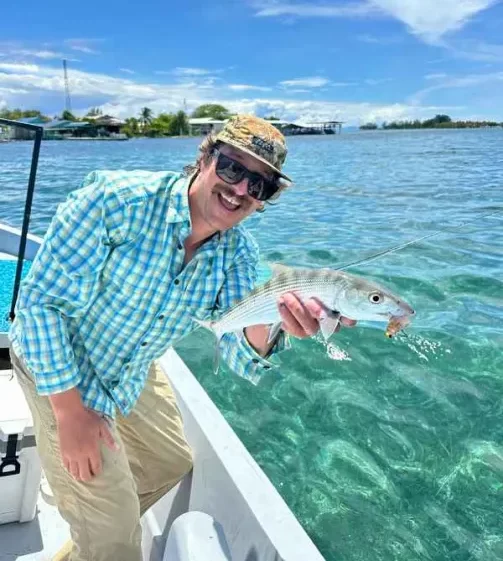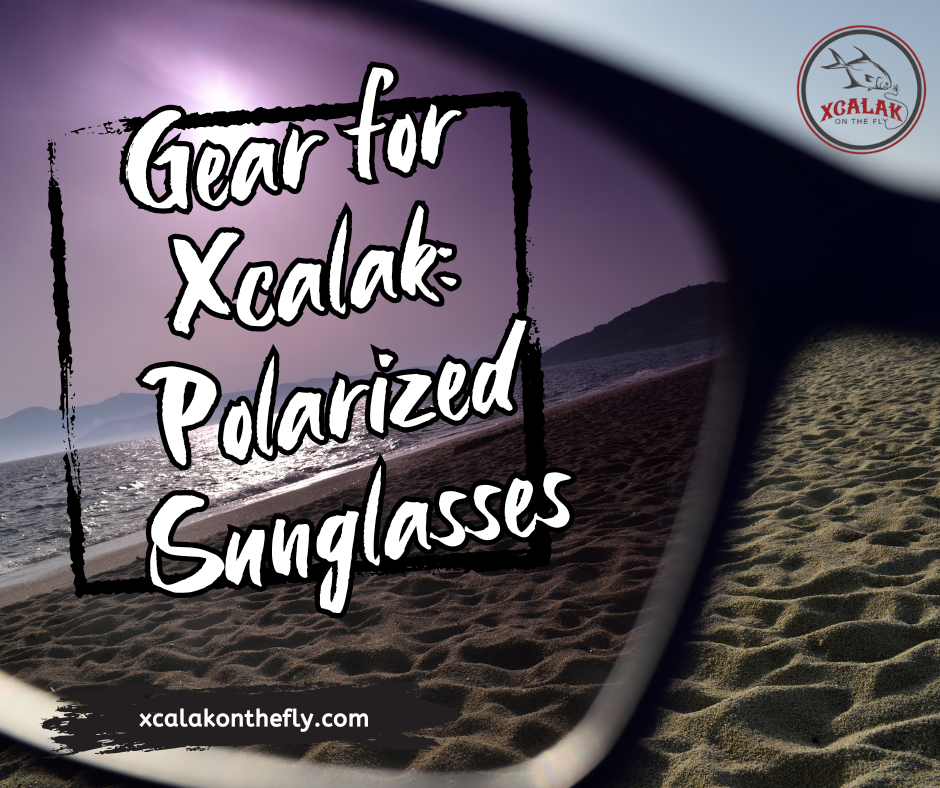
You’re standing ankle-deep in warm Caribbean water, the sun rising behind you like a fireball over the mangroves. The sky is cloudless, and the flats are glass-calm. You scan the turquoise shallows, your guide pointing just ahead, “Permit, eleven o’clock, thirty feet.” You squint, trying to pick out the fish through the glare, but all you can see is the reflection of the sky. By the time your eyes catch up, the shot is gone.
It’s that exact moment when you realize the frustration of not having brought polarized sunglasses. The fish you’ve been waiting for, the perfect shot, all gone because of the glare. It’s a feeling you don’t want to experience again.
If you’re planning a fly fishing trip to Xcalak, Mexico, polarized sunglasses aren’t just a luxury; they’re a necessity. The flats and shallows of the Caribbean coast are beautiful, but they’re also full of visual challenges. Harsh sunlight, bouncing glare, and constantly shifting water make spotting bonefish, permit, and tarpon nearly impossible without the right gear. Polarized lenses cut through that glare, letting you see into the water instead of just the surface.
Why Glare is the Enemy
Light reflects off the surface of the water in all directions, especially in open saltwater environments. This reflection, called glare, can blind your vision and mask everything below the surface. Whether you’re wading the flats or poling from a skiff, your ability to see fish before they see you is your biggest advantage. Without polarized lenses, you’re essentially blindfolded.
How Polarized Sunglasses Work
Polarized sunglasses use a special filter that blocks horizontally reflected light, the kind that causes glare. That means your vision is sharper, colors are truer, and you can see fish movements, shadows, and structures on the bottom that would otherwise be invisible. In Xcalak, where the fish are spooky, and the window for a perfect cast is often measured in seconds, this edge can be the difference between a story and a trophy photo.
Choosing the Right Pair
Not all polarized sunglasses are created equal. Look for brands that are specifically designed with fishing in mind, such as Costa Del Mar, Smith Optics, or Maui Jim. Amber or copper lenses work best for flats fishing. These lens colors are ideal for bright conditions as they enhance contrast and detail, making it easier to spot fish in the water. A wraparound frame helps block peripheral light and keeps the lenses snug during windy boat rides or when you’re leaning into your back cast.
Bonus: Eye Protection & Comfort
But it’s not just about the fish. Polarized glasses also shield your eyes from harmful UV rays, wind, and flying hooks. Spending long days under the Caribbean sun without proper eye protection is not only uncomfortable, but it can also be dangerous. A good pair of polarized glasses reduces eye strain, enabling you to stay sharp and focused for longer periods, ensuring your comfort and safety.
Don’t Leave Home Without Them
At Xcalak on the Fly, we’ve seen it time and again: anglers who arrive with all the right gear but no polarized glasses. They quickly find out just how tough it is to spot fish without them. Don’t let that be you. Make sure to add a solid pair of polarized sunglasses to your packing list. With them, you’ll fish smarter, safer, and with a far better chance of landing that dream permit.
Your eyes and your catch rate will thank you.

